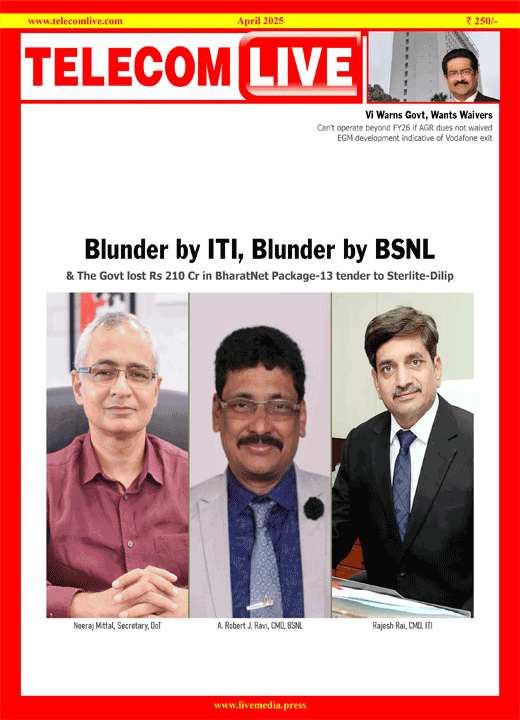DTH operators paid Rs 692 crore to MIB as licensing fee in FY23-24
The Ministry of Information and Broadcasting collected Rs 692 crore in licensing fees during the financial year 2023-24 from the four existing Direct-to-Home (DTH) operators, based on the current rate of 8% of Adjusted Gross Revenue (AGR).
This substantial revenue underscores the industry’s compliance with existing regulations, while simultaneously highlighting that TRAI’s recommendation to lower the licensing fee to 3% has been overlooked.
“An amount of Rs. 691,96,06,069 was received through Bharatkosh by all DTH operators towards the license fee during the Financial Year 2023-24,” noted the ministry in its annual report for FY 2023-24.
In August 2023, the Telecom Regulatory Authority of India (TRAI) released its ‘Recommendations on License Fee and Policy Matters of DTH Services’, in which it held that the DTH Licensee should pay an annual license fee equivalent to 3% of Adjusted Gross Revenue (AGR).
As per TRAI, AGR represents the revenue produced by the licensee’s main business operations by eliminating specific income sources and the GST amount actually paid to the government, thereby arriving at a transparent computation of AGR for DTH licensees.
According to an industry expert, DTH players have been asking for the implementation of the TRAI recommendations, which also aim to waive off the licensing fee by 2026-27.
“The MIB has not been considering the recommendations of TRAI. DTH operators have been writing to the ministry to take it into account because we eventually want it to be waived,” said an industry expert on the condition of anonymity.
At present, there are four pay DTH operators providing television services through addressable systems in the country- Tata Play Ltd, Bharti Telemedia Ltd, Dish TV India Ltd and Sun Direct TV Pvt Ltd.
The ‘DTH 2020 Amendment’ prescribed an annual License Fee at the rate of 8% of its Adjusted Gross Revenue (AGR), to be paid on a quarterly basis to MIB. The AGR is calculated by excluding Goods and Service Tax (GST) actually paid to the Government from the Gross Revenue (GR) of the Licensee.
As per TRAI, the Gross Revenue includes subscription fee, installation, activation, restoration, reactivation, relocation, visiting and other service charges, subscription and advertising revenue from platform services channels, carriage fees, revenue from marketing and placement agreements, commissions received, revenue from sale, repair and maintenance of customer premises equipment, royalties, revenue from customer support service and any other revenue of the enterprise.
Through an order dated September 16, 2022, the MIB had issued Operational Guidelines for DTH Broadcasting Services in India in respect of payment of license fee, Platform Service (PS) channels and sharing of infrastructure by DTH operators.
As per the 2022 Guidelines in respect of payment of license fee, the license fee shall be charged at 8 % of AGR, payable on a quarterly basis and the minimum annual license fee shall be subject to 10 % of the entry fee.
In respect of the PS channels, the Operational Guidelines permit a DTH operator to operate PS channels to a maximum of 5 % of the total channel carrying capacity of the DTH operator’s platform, and the DTH operators would be required to pay Rs. 10,000 per PS channel towards a one-time non-refundable registration fee.
DTH is an addressable satellite-based TV programme distribution system that covers the entire country.
The first DTH service provider operationalised its services in the year 2003, and the number of private DTH service providers had grown to six by the year 2007.
The number of private DTH operators at present is four. Additionally, Doordarshan is also providing its DTH services on a free-to-air basis.
A DTH operator had earlier written to the ministry to exclude taxes from computation of license fees for which a formal response is still awaited from the MIB.
Recently, the DTH sector has been facing tough competition from DD Free Dish, the free to air service of Prasar Bharati, and OTT platforms.
The DTH industry has lost nearly 8 million subscribers in the last three years according to TRAI data published recently.
Since 2021, the number of subscribers for the four major DTH players has reduced by nearly 7.6 million according to TRAI’s report- Indian Telecom Services Yearly Performance Indicators 2023-24. According to the report, the active subscriber base for these providers was 61.97 million as of March 31 2024, down from 69.57 million as of March 31, 2021.



